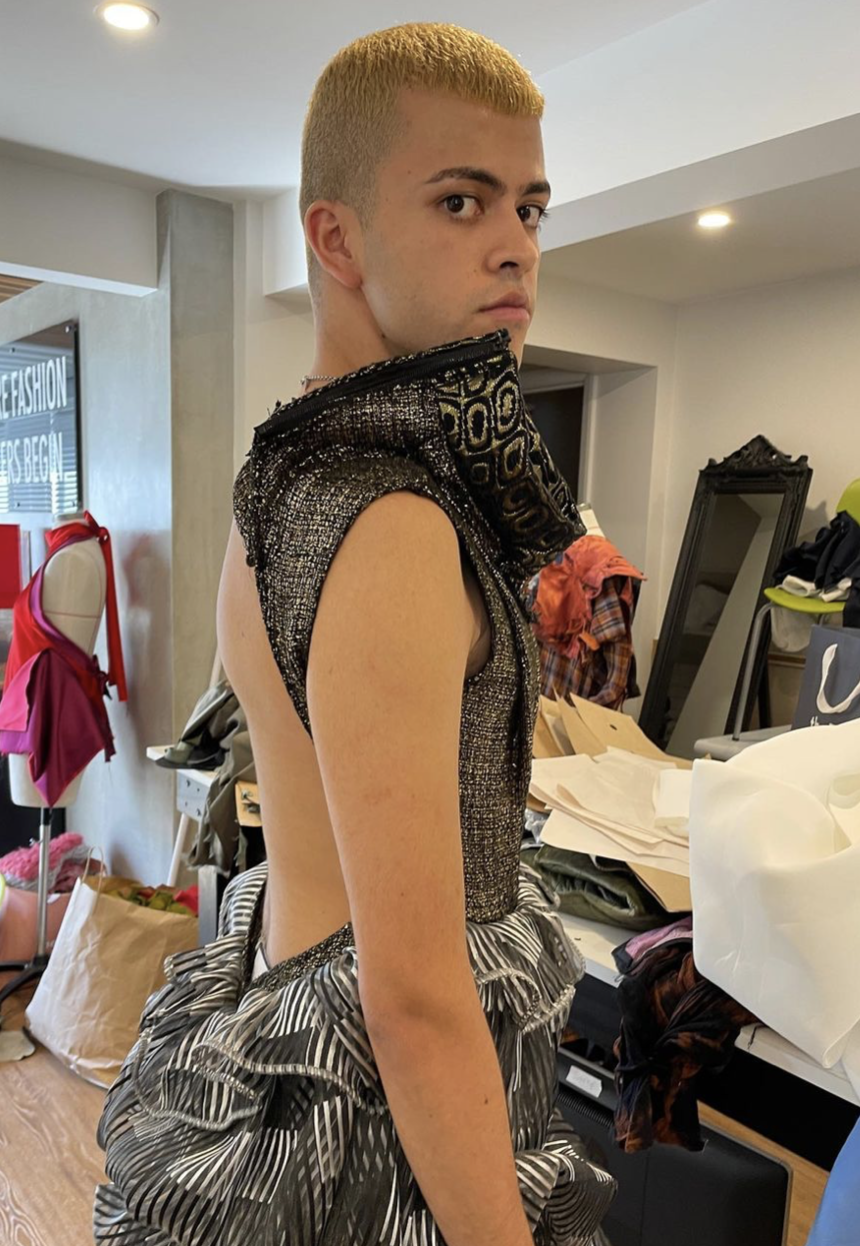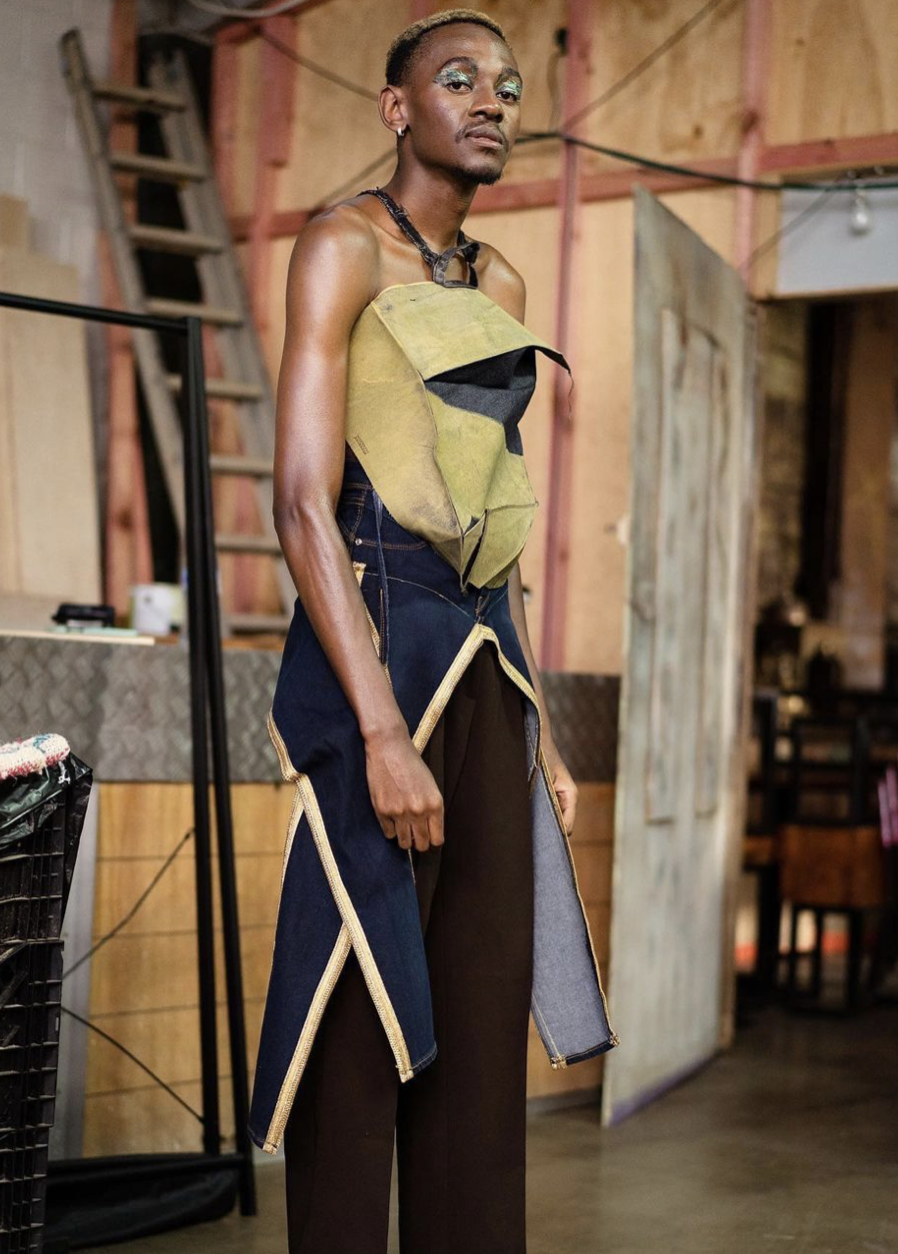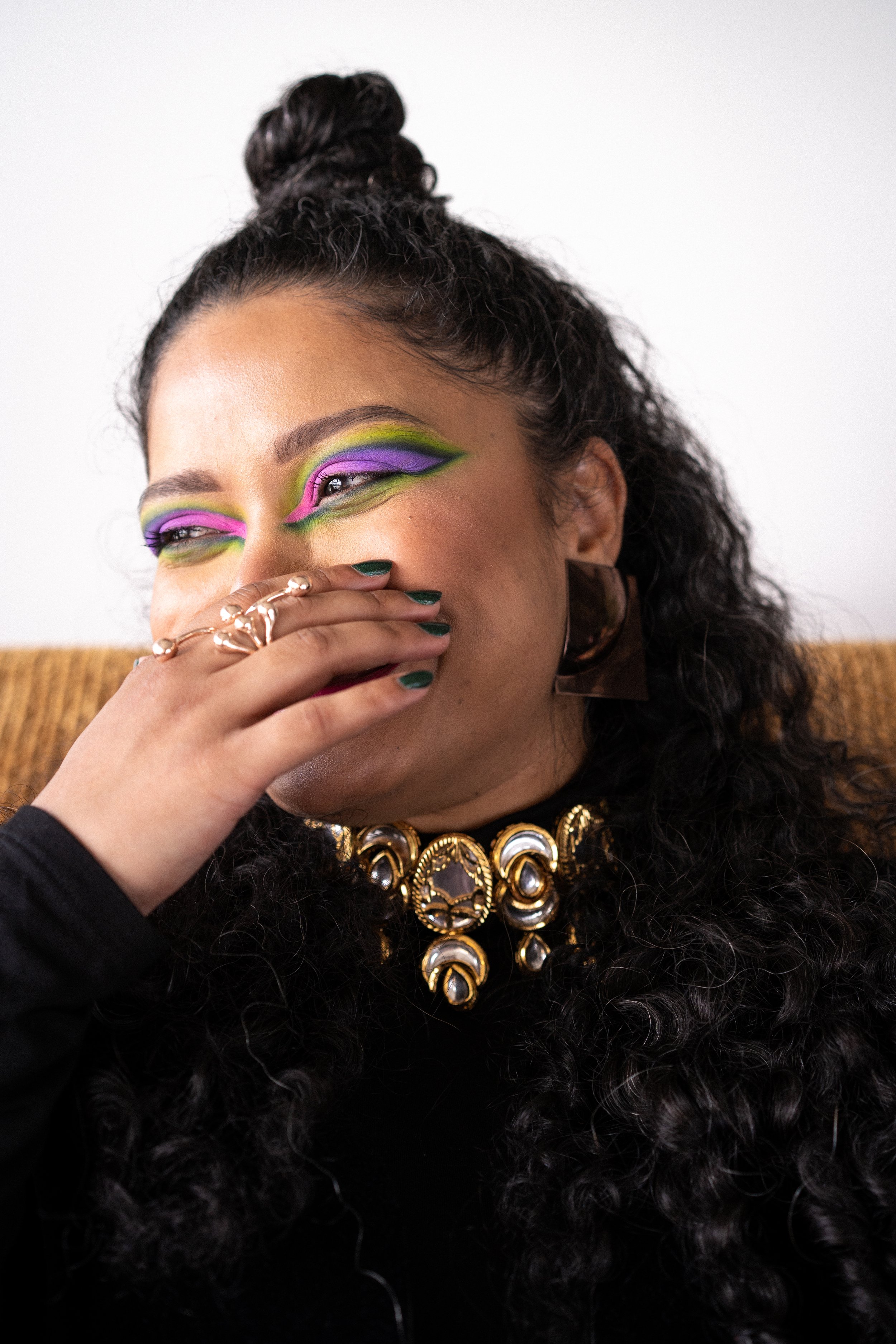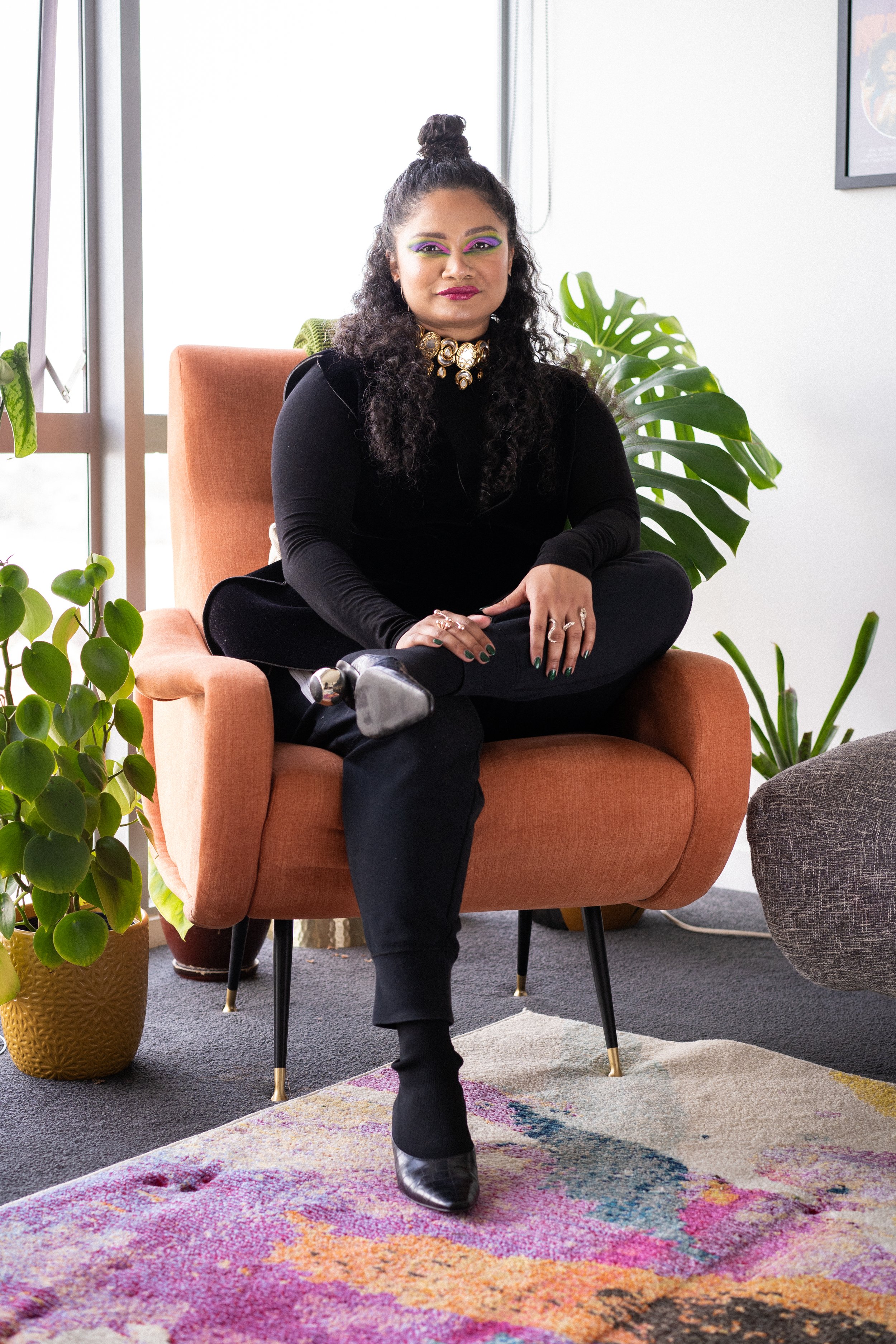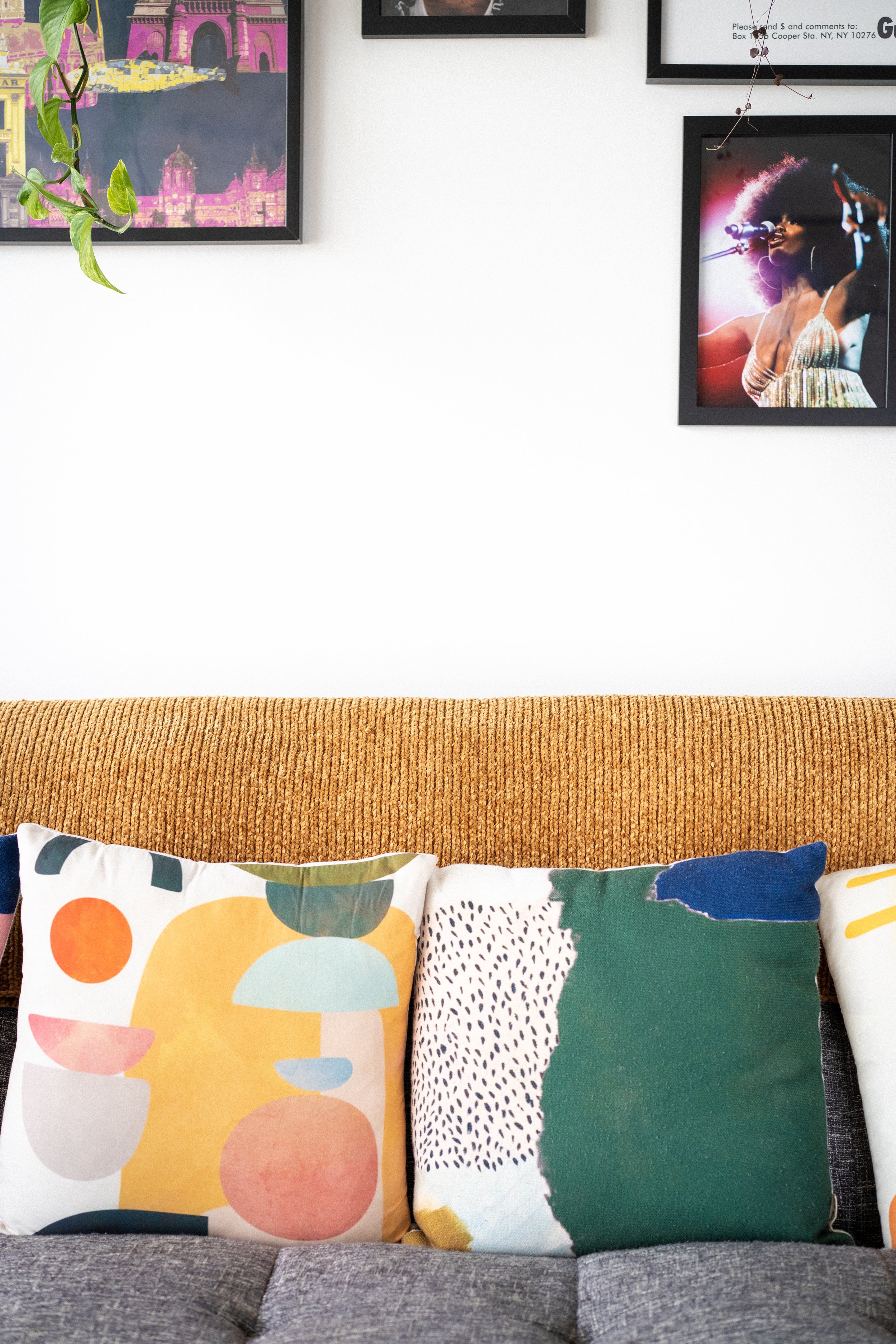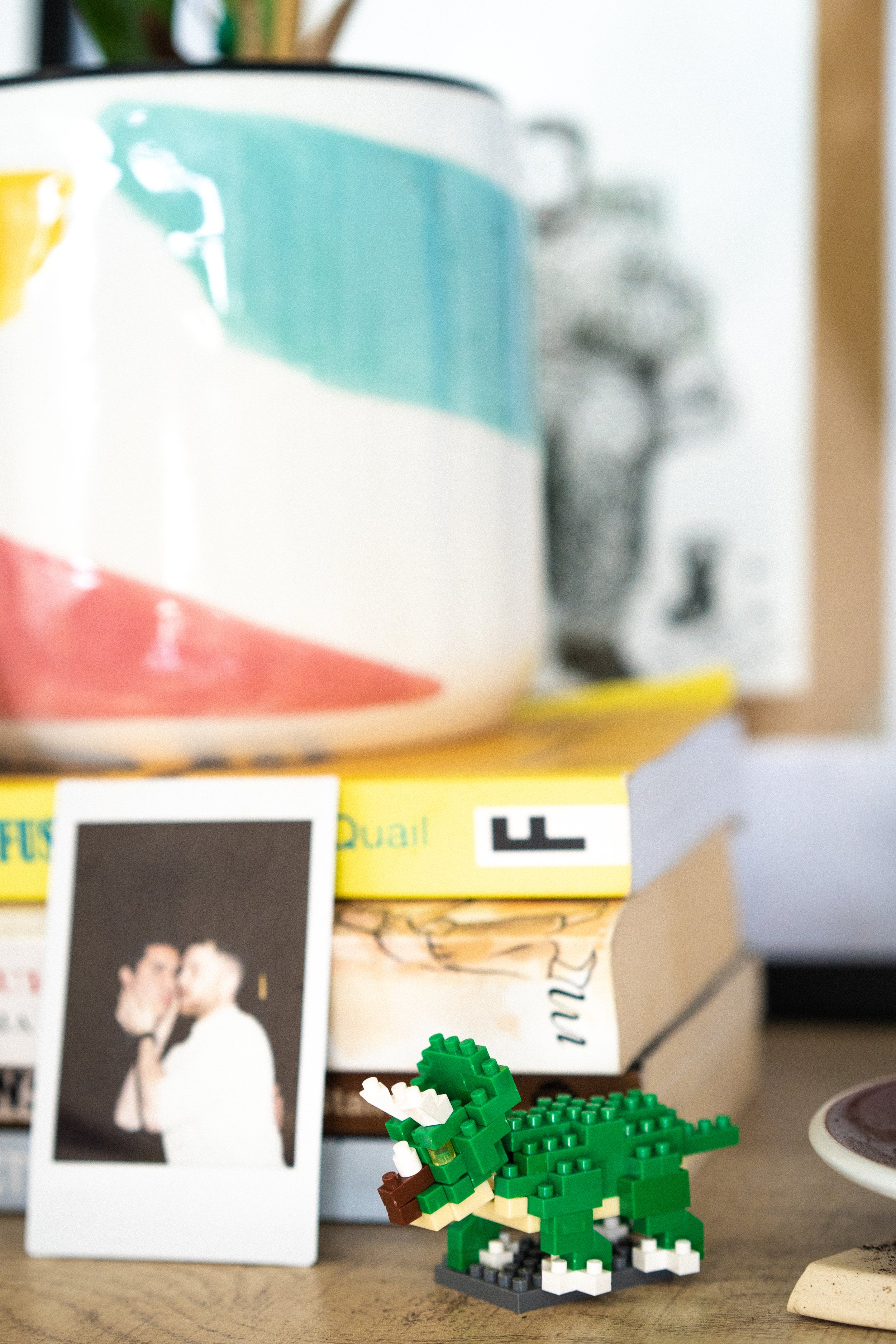Natasha Ovely
Designer, artist and founder— Starving Artists Fund
We speak to Natasha Ovely about her journey as a self-taught fashion designer, her life has led her to today: from her upbringing in India, Saudi to her time in Berlin and her life now in New Zealand. Natasha also shares about all things Starving Artist Fund, a socially conscious and gender-neutral brand and her creative process behind the brand.
Natasha photographed by Michelle Abraham, Makeup by Tallulah McLean
Hi Natasha, where is home now and where did you grow up?
Auckland is now my home. I grew up in India, Saudi Arabia and Dubai before arriving in New Zealand when I was 13 years old (on my own) to attend boarding school in Havelock North. I was one of two brown girls in my school and experienced racially motivated bullying for the first time. When I returned to Auckland with my parents years later, it felt alien to me. A month or so after I became an NZ citizen, I left. I travelled to South Africa and Europe did a few publishing internships in Shanghai and later London where I eventually lived and worked.
I followed the nomadic pattern of my childhood, it felt familiar. The displacement was strangely comforting to me at the time. Especially in cities like Berlin (my next home), where everyone seemed to be searching for something or running away from it. My next stop was Munich, I lived there for 3-4 years and it's one of my least favourite cities to this day. As you can probably tell, I tend to hold grudges against cities.
Coming home to start the brand in 2018 was a grounding experience, I didn't run away, I wanted to see it through.
Tell me about your journey as a designer and artist
I studied Fine Art at Elam and specialised in sculpture which is still a discipline that informs what and how I design. Being self-taught felt less daunting because I applied the same logic to a new medium.
I grew up in countries where clothing had clear political connotations and consequences if what you wore did not adhere to societal norms. I remember being so intrigued by loopholes people found to overcome this quick changes in rickshaws in Mumbai, abayas strategically cut to conceal and reveal a high-heeled bare leg with a deliberate stride in Dubai. The fact that my mother still wore a crop top and high waisted jeans under her abaya in Saudi Arabia, how we found a million different ways to defy our school uniform… It all reiterated my belief that clothing is inherently political and has more power than we give it credit for.
Image : Starving Artists Fund
What is your design process like?
It begins and ends with fabric. I approach making with the same tactility I used to apply to my sculpture practice at Elam, allowing the material to dictate what it wants to do.
The initial stage involves a lot of procrastination since I find that ideas come to me in multitudes all at once. It takes a fair bit of time to slow my thought process down to a pace where I can process them individually. I then let my muscle memory take over and start free cutting and draping, somehow the concepts in the back of my mind find their way into this step. It all starts to fall into place once it meets in context to the body.
How did you come up with the brand name?
I labelled a coin jar 'Starving Artists Fund' with a piece of masking tape when I moved into my apartment in Berlin in 2014. I told myself that I would start something of my own by that name one day.
Some highlights you would like to share with us
The fact that the brand is still going and was able to come to fruition in the first place will always be a constant highlight for me. I'm so thankful for that.
“I view my customers as aspirational people, having someone return as a customer or receiving an email or a message about how much they love wearing their SAF pieces is an incredible feeling.”
Ella aka artist Lorde in Starving Artists Fund for Viva/NZ Herald
What challenges have you come across as a creator and any important lessons along the way?
Setting my structure and trusting my process are two ongoing challenges I face as creative work is deeply personal and temperamental at times. It's soothing to remind myself that I am my harshest critic and that it's ok to slow down the pace (especially in light of the last two years).
I have done a lot of work on my fear of failure since I started the brand in 2018. I remind myself that only I can define what failure means and that it's about time I show myself some f*cking kindness.
Can you tell us how you navigate your business model? Is it pre-orders only?
When I first started, I made one-offs or small runs of each item but couldn't afford to make one in every size (XS-4XL). I quickly realised the popularity of our OSFM (One Size Fits Most/ Free Size) pieces with a majority of our customers being L to 4XL and still finding that they fit their bodies and made them feel good.
For the rest, pre-orders became an obvious solution to cater to everyone and eliminate deadstock.
In regards to responsible storytelling, how do you weave your own culture/heritage through your work and imagery?
It is inherently a part of me and my worldview and therefore comes without conscious effort.
Can you name some people - activists and advocates - that have influenced your work?
First and foremost, Maya Angelou. I love the revival of the Kindness King Keanu Reeves, reminding our generation of the importance of humility. Any person I encounter in everyday life who stands up to homophobes or racists when others laugh it off and make sure that the people around them are comfortable and safe.
What diasporic community do you consider yourself a part of?
As a 1.5 generation immigrant who had several adopted countries along the way, I have a loose definition of home. There are some sensory tells of 'home' when I visit Mumbai- The way my skin and hair adapts, how the humidity and pollution feel like a protective layer of SPF.
“To me, home is a compound concept- made of people, experiences and social landscapes that are disparate but carried within you as you move through any given space. ”
Any advice to younger BIPOC creators trying to navigate the industry.
Feel free to represent yourself however you see fit. Focus on what truly resonates with you first instead of internalising our society's need for a BIPOC mascot. Actively seek out opportunities by reaching out to people you look up to, you have nothing to lose by introducing yourself and widening your support network.
Tell us a little something about your own personal style - what do you love wearing and how has it changed since Covid?
It's a little bit bougie and a little bit lazy. Two uniform pieces always make up the base of my everyday dressing, a white cotton shirt or the Reject top from our first collection and a beat-up pair of track pants. I wear our laser cut logo tee, Kevlar top and The Buckler religiously and habitually wear unfinished toiles out on the town. I am a massive fan of ankle boots- my favourites include my space cowboy boots from & other stories and a black pair of ankle boots with a circle cut-out heel. I’m an absolute fiend for statement jewellery and sunglasses (Italian widow meets Elton John is the brief).
Tell us how you navigate beauty and makeup as an extension of your personal style. Do you have go-to brands and looks?
Makeup is such a fun part of my everyday routine- purple lipsticks are my idea of a neutral and my eye makeup is a carnival of colour. On a lazy day, a swipe of Natasha Denona's Chromium liquid eyeshadow in Scarab or Ultraviolet with graphic liner is my go-to. On other days the Anastasia Beverly Hills Alyssa Edwards palette is my holy grail of highly pigmented colourful shadows. I like my skin to have a dewy and natural look with sheer coverage, I have been using Mac Studio Face and body foundation for years.
What are your favourite podcast, documentaries or movies and book/s?
Books:
Shantaram by Gregory David Roberts
Just Kids by Patti Smith
Seeing through clothes by Ann Hollander
Camera Lucida: Reflections on Photography by Roland Barthes
A little Life by Hanya Yanagihara- this one is quite a polarising book that should come with a trigger warning (sexual assault) although it is impressive in its ability to elicit extreme emotions.*
Documentaries:
Joan Didion: The centre will not hold
Paris is Burning
Movies:
Before midnight
Everybody Says I'm Fine!
Darjeeling limited
Almost famous
Snatch
Dhobi Ghaat (Mumbai Diaries)
What are your top 5 songs/sounds to keep you going?
Super Rich Kids- Frank Ocean, Earl Sweatshirt
Back to black- Beyonce, Andre 3000
Consideration- Rihanna, SZA
Werewolf- Fiona Apple
The Need to Know- Wale, SZA
What’s next for you and the brand?
I'm very excited about developing a new chapter of SAF in addition to our clothing label, which will focus on events championing emerging talent and multi-disciplinary collaborations. It is a challenge to the existing format of runway shows, making it open to the general public and taking away the red tape and hierarchy that fashion has become synonymous with.
Photographer - Michelle Abraham
MUA - Tallulah McLean




